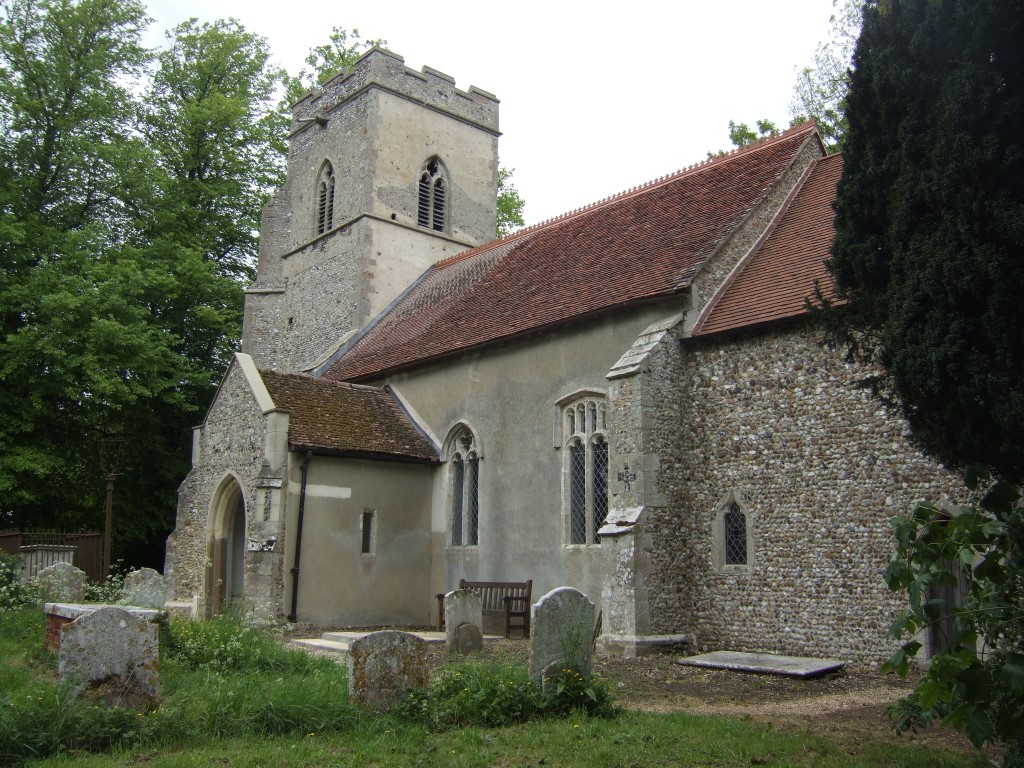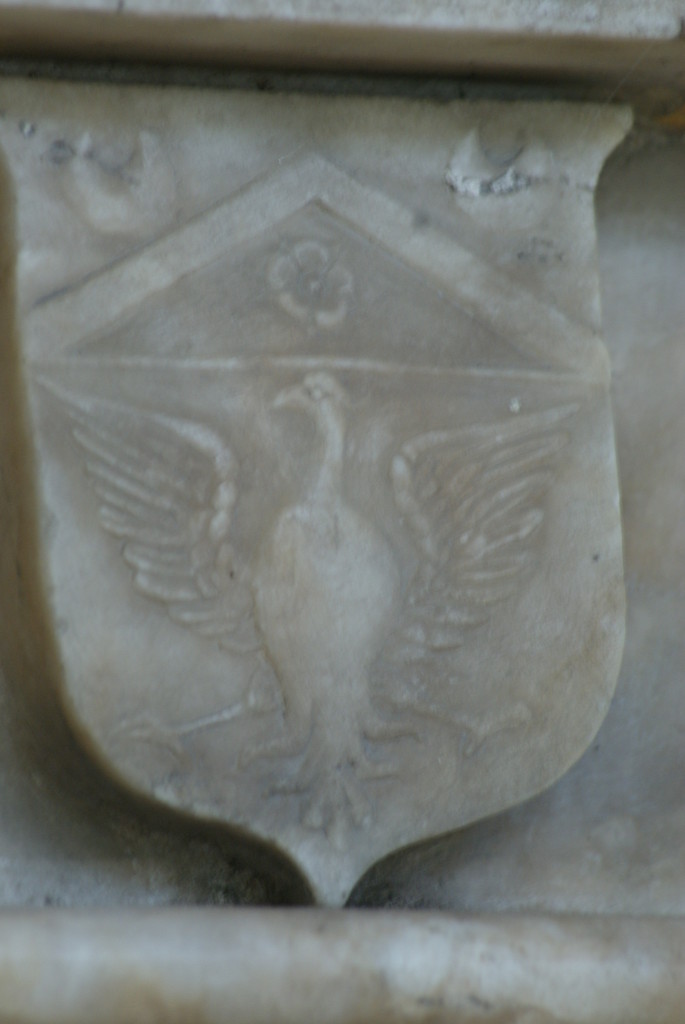As a preface, heraldry is a 900 year old practice of designing, displaying, describing, and recording of coats of arms. The College of Arms was responsible for English coats of arms, although many other existing arms did exist. Non compliance, using someone else’s coat of arms was punishable, however, in the late 1600’s, this practice ceased.
The best example of the heraldry of Flick (West Creeting, Suffolk, England) is displayed in the Bramford, Ipswich, Church of England, on a plaque. This mural monument on the south side near the east end of the south aisle commemorates the death of Elizabeth Flick on May 16, 1648. A full description is in the “Some Pedigrees of the Visitation of Kent 1663-68”. In the middle of the stone, at the top, are arms of the Dade family impaling arms of Flicke—a very touching dedication of a husband to a deceased wife who was the daughter of Samuel Flicke of West Creeting.
This crest is also referenced by the manuscript works of David Elisha Davy (1796-1851). The book “A Dictionary of Suffolk Arms” (1965) by Joan Corder, describes the crest as “An eagle displayed on a chief a chevron between three crescents and/or An eagle displayed on a chief a chevron between two crescents in chief and a rose in base and/or Sable an eagle displayed Or on a chief Azure bordered Argent a chevron between two crescents in chief and a rose in base Or”. This description was in accordance to a system of blazonry, describing the crest.
References from “Suffolk Arms”, show that Richard Flicke (1500’s Woodbridge, Suffolk) and Nathaniel Flick (1592-???, West Creeting) were men of arms. Nathaniel Flick, son of Robert. Flicke (Vice Admiral of the London Merchants) was a graduate of Cambridge in 1624 and a Rector of Hardingham when he was “ousted” by Parliament in 1642 as a “Royalist”. A previous Chancery court case describes Nathaniel Flick as a man of arms.
Questions concerning commencement of usage of arms leads us to believe that Robert Flick, no doubt, used this crest, however it is entirely possible that his father, Edmund who was a Gentlemen, a bailiff and a merchant of Ipswich, may also have been privy to these arms as well.
Correspondence with The College of Arms in London, fails to show any references to the heraldry of the Flicks, however they acknowledge the authenticity of David Elisha Davy’s works. It should be noted, that merchants in the mid 1500’s used their own crests and the Flicks of West Creeting were gentlemen of substantial means and were traders in Bruges and Lisbon.
The earliest source of the Flick crest appears to be from Richard Flycke, bailiff and Gent. of Yarmouth was noted in 1433 to have a coat of arms. This crest was recognized but not documented by the College of Arms.


